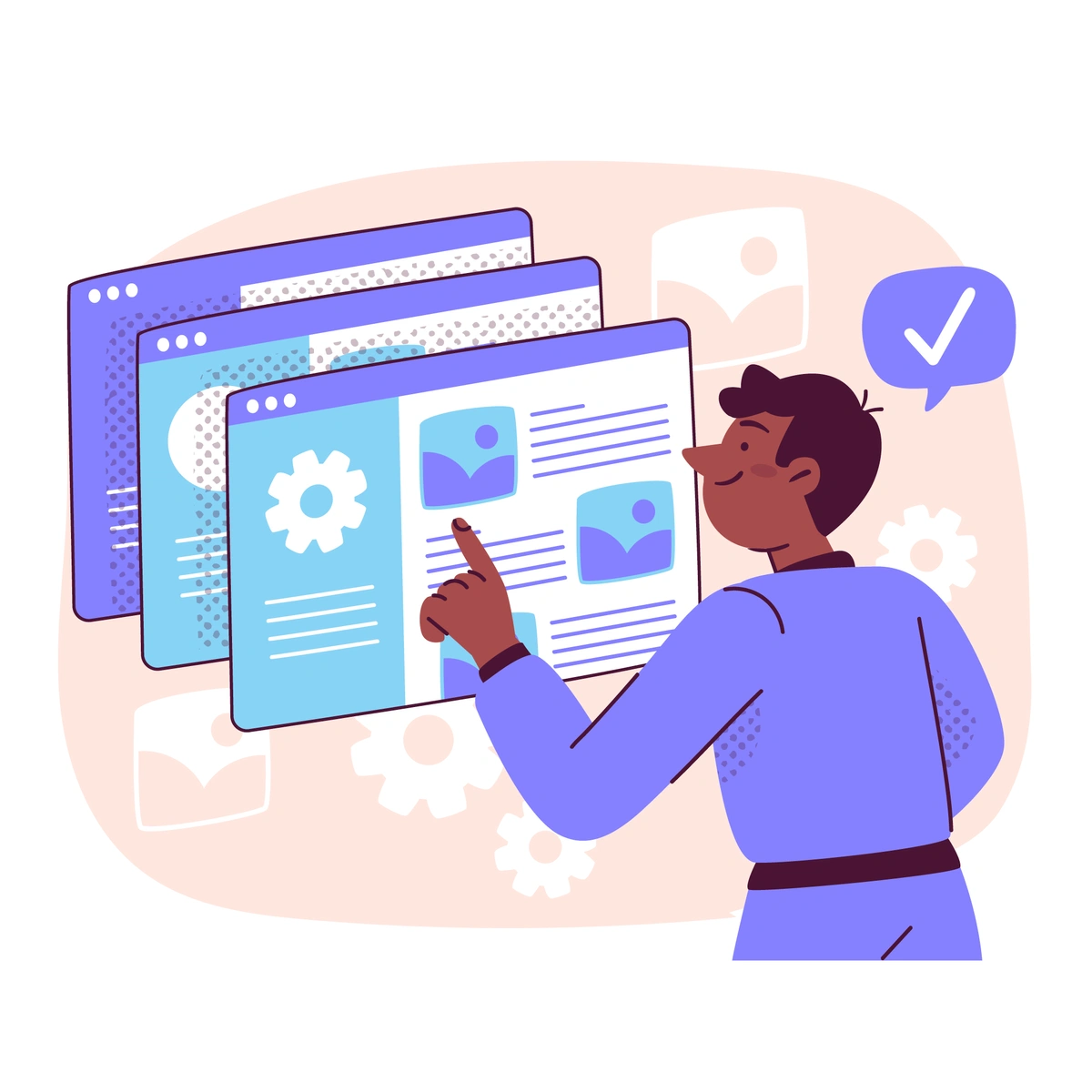atlas-bench
by Atlas Bench
2023-11-22
Lotus Notes first emerged in the late 1980s as an email and calendar application. Over the next few decades, IBM expanded the platform into an all-in-one collaboration suite with email, instant messaging, contacts, calendar, file sharing, and more.
At the time, Lotus Notes was revolutionary. It allowed remote teams to communicate and work together far more efficiently than ever before. The client-server architecture also made it easy for organizations to host the platform themselves without relying as heavily on the cloud.
However, over 30 years later, Lotus Notes is now outdated and clunky compared to modern collaboration tools. The platform lacks key features that businesses demand today, like native mobile apps, third-party integrations, automation capabilities, and an intuitive user experience.
While IBM has tried to modernize Lotus Notes over the years, the platform is still based on decades-old architecture that limits how much it can evolve. As a result, many organizations are finding that Lotus Notes no longer meets their needs.
Lotus Notes has several shortcomings that make collaboration more difficult and limited for teams today.
The Lotus Notes interface feels dated and unintuitive compared to slick new collaboration platforms. Simple tasks like searching for content or starting a new discussion thread can be frustrating with the clunky Lotus Notes UI. This leads to a poor user experience that makes employees less eager to adopt and regularly use the platform.
Lotus Notes also does not have robust native mobile apps. The mobile web experience is lackluster, making it tough for employees to collaborate on the go. This severely reduces productivity for remote teams and users who travel often. In today’s mobile-first world, having poor mobile support puts teams at a disadvantage.
Additionally, Lotus Notes has very limited integrations with other critical business apps. It does not connect smoothly to modern DevOps tools, CRM and marketing platforms, project management systems, or other solutions. This creates frustrating silos and gaps in workflows. Employees end up constantly switching between disjointed apps.
While Lotus Notes has enterprise-grade security overall, its older architecture also has vulnerabilities that may open the door to cyberattacks. The platform must be carefully patched and hardened to ward off data breaches or ransomware attacks. This cumbersome security maintenance detracts IT resources.
Furthermore, Lotus Notes enables little customization or extensions. Companies cannot tweak the interface, workflows, forms, or other elements to suit their unique processes. The platform is notoriously stubborn to customize without advanced coding skills, limiting adaptability.
Atlassian Confluence offers a modern alternative to Lotus Notes that solves its biggest limitations. Companies can maximize collaboration, foster innovation, and support remote work at scale with Confluence.
Confluence provides an incredibly intuitive user interface. The clean, consistent layout works seamlessly across web, desktop, and mobile apps. Teams can quickly navigate Confluence and find the content or tools they need with minimal clicks. This saves employees time and frustration compared to clunky legacy platforms.
Robust Confluence mobile apps enable teams to collaborate from anywhere. Users can chat in real-time, share files, assign tasks, approve work, and more on-the-go to stay productive even when traveling or working remotely. The ability to work seamlessly from mobile devices keeps team members connected and engaged.
Confluence also integrates with hundreds of other business apps through flexible APIs and out-of-the-box connectors. This allows Confluence to centralize work across the entire tech stack, avoiding disjointed workflows between isolated apps. Common business systems across operations, sales, marketing, and beyond can integrate smoothly with Confluence.
Furthermore, Confluence offers enterprise-grade security and compliance capabilities like data encryption, role-based access controls, and SOC 2 compliance certifications to provide peace of mind. The cloud-native platform benefits from constant security enhancements and vigilance from Atlassian security engineers.
In addition, Confluence enables deep customization for any process with customizable views, templates, forms, reports, and components. This allows teams to personalize Confluence to fit their exact use cases and optimize workflows. Confluence adapts to teams, not the other way around.
Confluence includes a wide range of features that enable teams to collaborate and get work done more efficiently:
With an intuitive WYSIWYG editor, it’s simple for users to create pages, blog posts, status updates, and any other content. Integrated formatting options, drag-and-drop image uploading, link insertion, file attachments, and more bring content to life. Publishing controls allow content to be reviewed before going live.
The commenting system in Confluence fosters productive discussions. Users can post comments on content with threaded replies to have ongoing conversations. @Mentions notify colleagues and automatically link to their profiles to loop them into relevant discussions.
Confluence’s fast, accurate search makes it easy to find needed documents in seconds, even in very large environments. Useful filters, suggested results, and synonyms aid discovery. Search results can be sorted and refined as needed.
Page hierarchies, grouping, and tagging keep content logically organized. Pages can have parent-child relationships to build an intuitive taxonomy. Related pages and child pages are easy to navigate between. Content maps provide an aerial view of how pages are structured.
Custom notifications keep users aware of relevant activity like content edits, comments, due date changes, and more. Users can watch spaces, pages, or blogs to tune notifications to their interests. Email digests can also be enabled to bundle notifications.
Pre-built templates let teams quickly spin up new pages for common use cases like projects, meetings, roadmaps, retrospectives, audits, and more to save time. Template packages help customize Confluence for specific departments and industries.
Precise permissions settings allow control over who can view, edit, or comment on each piece of content. Permissions can be set based on users, groups, roles, content types, and more. Space-specific restrictions provide added security.
Custom forms, surveys, and structured templates in Confluence collect structured data. Forms can validate inputs, branch conditionally, and integrate with external data sources. Applications and automations can tap into submitted data.
Confluence audits changes, tracks usage trends, monitors interactions, and more. Usage reports uncover adoption and engagement. Executive summary reports provide insights into how Confluence is utilized.
Confluence APIs enable extensive customization and integration with 600+ apps. Webhooks and automation integrate Confluence into any external system or process. JavaScript macros add new in-page functionality.
Transitioning from Lotus Notes to Confluence will make your team far more agile, productive, and better equipped to handle the demands of today’s business world. Here is a high-level approach for making the switch:
Take time to thoroughly inventory your Lotus Notes environment and how it is used within your company. Define clear goals for your migration to Confluence. Build a detailed plan for moving all content, integrations, workflows, and knowledge into Confluence. Get input from managers and end users on common use cases.
Work closely with Atlassian migration experts to migrate Lotus Notes content like emails, calendars, documents, databases, and more into properly organized Confluence spaces and pages. Take advantage of advanced automated migration tools. This preserves valuable institutional knowledge accumulated in Notes while optimizing it for discovery and use in Confluence.
Identify systems currently integrated with Lotus Notes like CRM, HRIS, ERP, marketing automation, and other specialty tools. Incorporate them into your Confluence ecosystem by building robust connections between Confluence and those systems via APIs, out-of-the-box integrations, and custom add-ons.
Once the migration is complete, focus heavily on training employees and helping them adopt Confluence through in-depth tutorials, tip sheets, webinars, chat support, and transition guides. Make sure users are fully comfortable navigating, creating, finding, and managing content in Confluence.
Track Confluence adoption across your organization with pulse surveys and usage analytics. Regularly gather feedback on the user experience. Use this input to continually optimize your configuration, customizations, content structure, access controls, templates, and other elements to maximize the value Confluence delivers.
Lotus Notes laid the foundation for enterprise collaboration, but its limitations and dated design prevent it from meeting the needs of today’s businesses. Migrating to Confluence ushers in an era of more dynamic teamwork, seamless integrations, mobility, innovation, and growth.
With an incredibly intuitive interface, robust collaboration features, and advanced enterprise-grade capabilities, Confluence enables organizations to work faster and smarter. The flexible platform can be customized to fit any team’s needs now and into the future. And as a cloud-based system, Confluence is always improving with new features delivered through regular updates from Atlassian.
The time has come to upgrade your approach to collaboration by making the switch from rigid and outdated Lotus Notes to modern, extensible Confluence. Your employees, partners, and customers will thank you through more productive and satisfying teamwork powered by Confluence. Don’t get left behind with legacy technology – upgrade to Confluence and unlock better collaboration today.

Learn how to streamline your sprin...
29 August 2024

Learn how to streamline your sprin...
6 August 2024

Learn how to establish a robust Ve...
23 July 2024